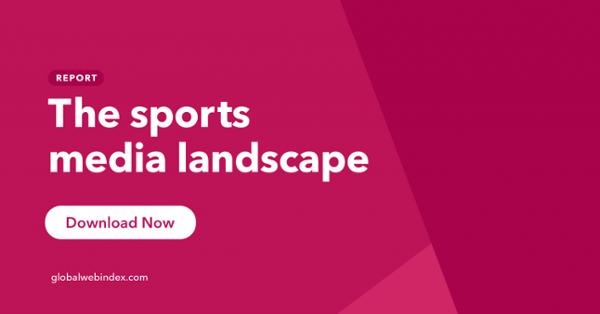We’re witnessing one of the most exciting periods in sports entertainment in recent memory.
For an industry that’s been sluggish in its move to digital and criticized for being male-dominated, sports is now taking significant strides to update its image.
Having turned up (fashionably) late to the digital party with multiple online broadcasting deals across major sports leagues and competitions, sports is also breaking the mold with entirely new forms of sports competitions.
Esports, or professional competitive gaming competitions, despite their contentious “sports” status among more traditional sports fans, are attracting much-needed younger audiences and new opportunities to engage fans.
But one of the most interesting trends shaping the current sports landscape is the rise of women’s sports. No longer confined to the sidelines, the profile of women’s sports continues to grow and stamp its mark on the industry.
This year will see one of the most anticipated events in women’s sports, the FIFA Women’s World Cup (WWC), kicking off in France on June 7th.
As noise surrounding the event continues to escalate in the build-up, it’s worth digging into the Women’s World Cup audience to lay out the state of play for brands and marketers in how best to reach these fans.
What gender disparity?
First thing’s first:
Just because this is a women’s competition, that does not mean that its fanbase consists predominantly of females.
In fact, the gender breakdown for the WWC actually skews very slightly male, but in general, it’s a fairly even split between men (53%) and women (47%).

In Europe, almost two-thirds of WWC watchers are male, and in no region does this gender breakdown lean towards females to a significant extent.
Age has a major impact here. Among younger age groups, the audience profile tends to skew towards females slightly.
Whereas among older groups, this flips overwhelmingly towards males, with two-thirds of WWC watchers being male among 55-64s.
Equality matters to them.
The sports sector, and soccer in particular, has been no stranger to controversy surrounding gender equality.
In 2016, FIFA amended its statutes to bring gender equality closer to the center of the organization’s governance framework, but pay disparities between male and female players still cause contention.

FIFA has responded by doubling the prize money for the Women’s World Cup, but gender parity will continue to be an issue in professional sports more broadly, and this year’s WWC will help to project it to the forefront of the conversation.
This is an important opportunity for brands and stakeholders to make their position clear on the subject. Corporate social responsibility extends across all industries, not just within the realms of environmentalism, and has emerged as a crucial factor that companies can’t ignore.
Adidas has embodied this concept, having pledged to pay women the same bonus payouts as men for winning the WWC. This kind of strong brand messaging resonates well with the WWC audience.
More than 8 in 10 of these fans believe we should all strive for equality, displaying a notable difference to the average internet user.
Female fans in particular are more likely to feel the most passionate about equality (87% do), but the figures remain consistently high between genders.
They care about social causes.
We can see how driven this audience is by social issues in their interests. WWC watchers are 55% more likely than average to say they’re interested in political and social issues.
This extends throughout their digital life, to how and why they use social media and what they expect from brands.
In fact, this audience is twice as likely to follow good causes on social media (33% do) and they’re well over 2x as likely to want their favorite brands to support good causes too (30% do).
It’s important to frame the surge of interest in women’s sports within the context of the major trends shaping today’s world.
From the #Metoo movement to the war on plastic and the culture of accountability between companies which is amplified by social media; consumers are being empowered, and companies have no choice but to respond.
Not taking action and sitting on the fence can risk damaging a brand’s reputation, so it’s essential to throw their weight behind the progressive and socially-responsible practices which increasingly shape consumer expectations.
Women’s sports are no exception to this — the beliefs and world outlooks of WWC fans have provided brands with an open goal, so to speak: to join an extremely important public conversation and engage fans on a deeper level.



